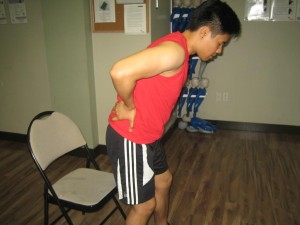A spinal fracture might be due minor falls or trauma. Most of these injuries do not necessitate surgery but major fractures can lead to significant long-term issues unless promptly and correctly treated.
A spinal fracture can range from sore compression fractures often seen after minor trauma among individuals with osteoporosis to serious damage such as burst fractures and dislocations after vehicular accidents or falls from a height. The severe injuries frequently result to instability of the spine with high risk for spinal cord injury.
What are the causes?
If the spine is subjected to an external force such as a fall, the forces might exceed the capability of the bone inside the vertebral column to support it. This causes the anterior region of the vertebral body to be flattened which results to a compression fracture. In case the whole vertebral column damaged, it leads to a burst fracture.
For mild compression, it results to mild pain and deformity. If the compression is severe in which the spinal cord or nerve roots are affected, there is intense pain and a hunched forward deformity.

Management of a spinal fracture
A spinal fracture is treated with immobilization using a brace or corset that is worn for up to 12 weeks. The brace helps reduce the pain and prevent deformity.
Surgical approach
Severe cases might necessitate surgery. Some of the commonly used procedures for a spinal fracture include:
- Vertebroplasty – this is used to treat compression fractures. During the procedure, the surgeon introduces a catheter into the crushed vertebra to introduce bone cement that hardens to stabilize the vertebral column.
- Kyphoplasty – this involves the insertion of a tube into the vertebral column under an X-ray and followed by the insertion of an inflatable bone tamp. When expanded, the tamp reestablishes the vertebral column to its initial height while generating a fissure that is occupied with bone cement.
Stabilization can also be achieved by removal of the damaged vertebra and replacing them with screws, plates or a cage.
Generally, braces are used for 6-12 weeks after surgery in addition to 3-6 weeks of physical therapy. If kyphoplasty was done, the individual is encouraged to resume normal activities as soon as possible without any limits. The doctor might suggest physical therapy and rehabilitation.
Quick Note / Disclaimer
The material posted on this page on a spinal fracture is for learning and educational purposes only. To learn to recognize and manage fractures, register for a first aid and CPR course with Mississauga First Aid.
